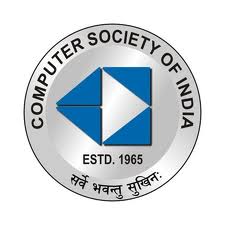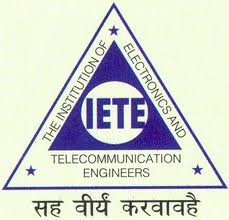
International Conference on Advances in Computing and Communications (ACC-2012)
9-11 August 2012,
Rajagiri School of Engineering & Technology, Cochin, Kerala, India
National level workshop on software defined radio in signal processing
Workshop Registration
Workshop Overview
Hands on training in basic Signal Processing, Filter Design, Communication Experiments with GNU Software Defined Radio and Universal Software Radio Peripheral (USRP) .Instruction for doing two dozen well defined Software Defined Radio (SDR) experiments for understanding basic communication theory will be given.
Objectives
To impart knowledge and information about the latest trends to participants and also to seek new avenues for research and development in Instrumentation and Process control.The workshop focuses on research, development and applications in the areas of instrumentation, measurement, process control and includes keynote presentations by leading researchers from premier academic/research and industrial organizations
Introduction
GNU Radio is an open source Software Defined Radio (SDR) project that was started about ten years ago by Eric Blossom, an electrical engineer. The main idea which is behind this project, as its founder says, was to turn all the hardware problems into software problems, that is to move the complexity of a radio equipment from the hardware level to the software one, and get the software as close to the antenna as possible.
Advantages of SDR
Software defined radio has some advantages that were not been possible before:
- It can be reconfigured "on-the-fly"
- It can be easily and rapidly upgraded with new software versions or enhanced features
- It is possible to talk and listen to multiple channels at the same time
What is USRP?
USRP, which stands for Universal Software Radio Peripheral, is a general purpose motherboard which can host a wide selection of daughter-boards, each of which implements a signal processing block found in the GNU Radio software package.
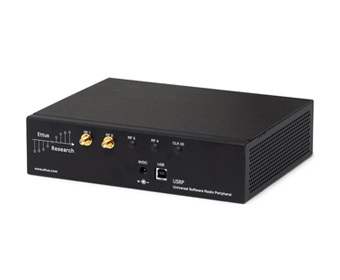
GNU Radio applications
The GNU Radio package is provided with a complete HDTV transmitter and receiver, a spectrum analyzer, an oscilloscope, a multichannel receiver and a wide collection of modulators and demodulators. Other advanced open source projects that are still in the feasibility phase or in progress are:
- A system that is able to record multiple stations simultaneously
- Time Division Multiple Access (TDMA) waveforms
- A passive radar system that takes advantage of broadcast TV for its signal source
- Radio astronomy
- Digital Radio Mundial (DRM)
- Software GPS
- Amateur radio transceivers And many, many more
Workshop Topics
- Mathematics of signal processing - a Coordinate geometry point of view
- Polynomial representation of signals - Z-transform, DTFT, Convolution
- Data Transforms - DCT, DFT, FFT , Walsh hadamard, Wavelet
- Shift + amplitude scaling + adding = Digital filters
- Sampling rate conversion - a stepping stone to SDR
- CIC (Cascaded Integrated-Comb ) Filters - Multiplierless filters inside SDR
- Trigonometry + Concept of analytic signal - making low frequency signal ride over high frequency carrier waves
- Analog and Digital Modulation - AM and FM , FSK, GMSK
- Source and Channel Coding
- GNU radio installations and experiments
- USRP + GNU Radio experiments in Real-time Communication experiments
- USRP + Simulink experiments in Real-time Communication experiments
Experts :
Experiments
- AM - DSBSC, DSB, SSB, FDM, QM (Modulation and Demodulation )
- FM - Modulation and Demodulation
- Digital Modulation - ASK, FSK, BPSK, QPSK, GMSK
- OFDM based Communication System
- Packet data Communication System- Simplex, Voice Tx, CSMA, Bluetooth
- USRP based Virtual Lab (web based Remote antenna experiments that share costly Spectrum analyzer)
- Deep Space imaging with SDR and L-band Antenna
- Ionospheric studies with SDR and STUDSAT satellites
- Receiving data from AO weather satellite using USRP
- GNU Radio Based Control Experiments (This type of experiments try to avoid costly softwares like labview and simulink.)
- Single Board Heater System
- Control System Experimentation Platform
- Contains Heating Element, Fan and Temp. Sensor connected to microprocessor.
Installing GNU Radio Companion software using CDE
CDEstands forCode,Data, andEnvironment. It is developed in Stanford university by Philip J. Guo for automatically creating portable linux software. It solves all the problems that we usually encounter while installing GNU Radio companion software. Once we install GNU radio in a machine successfully, CDE allows us to copy the successfully installed software into any other similar (hardware +major version of OS) system and run.
More details are available athttp://www.stanford.edu/~pgbovine/cde.html
 CEN research associate Mr. S. Senthil Murugan and M.Tech students in CEN and Remote sensing are testing its efficiency and usefulness in SDR experiments. If it succeeds in all the tests, then we can vouch that GNU radio can be used by anybody without any difficulty.
CEN research associate Mr. S. Senthil Murugan and M.Tech students in CEN and Remote sensing are testing its efficiency and usefulness in SDR experiments. If it succeeds in all the tests, then we can vouch that GNU radio can be used by anybody without any difficulty.
Main obstacle with GNU radio in making an entry into academia was that its intended primary users - ECE students and faculty- were not comfortable with the OS (Linux) on which GNU radio practitioners work. Installation was taking hours and most weak hearted students abandon the idea if the first attempt to install fails. Now it is a question of copying from a machine where it is working successfully.
We advocate the use of GNU radio and USRP right from the first year of Engineering. At present USRP is costly but fortunately its design is open-source and if we join hands together we can develop a low cost version (may be for Rs 30,000) so that it is affordable to many (or affordable to a group of students by sharing the prices ) students. Then very advanced real-time communication experiments by the students at any time will become a reality.
Can we hack GSM phone calls
We will make a try using 2TB of data from internet and GPU (gpraphical processing unit. Mr. Rakesh peter will tell you how to capture GSM data using USRP . More details about the tools are available athttp://srlabs.de/research/decrypting_gsm/)
Warning
Please use these tools carefully and never intentionally record other people's conversations. The above website was created to encourage you to use them to test the security of your cell phone service and discuss your results on the project mailing list(http://lists.reflextor.com/cgi-bin/mailman/listinfo/a51)
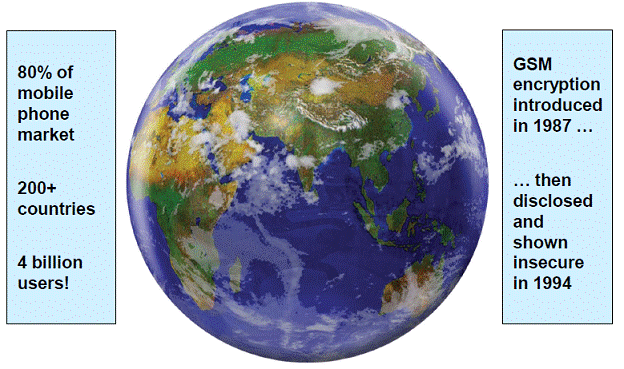
GSM Simplified.
Experiments with OpenBTSOpenBTS is a Unix application that uses a software radio to present a GSM air interface to standard 2G GSM handset and uses a SIP softswitch or PBX to connect calls. (You might even say that OpenBTS is a simplified form of IMS that works with 2G feature-phone handsets.) The combination of the global-standard GSM air interface with low-cost VoIP backhaul forms the basis of a new type of cellular network that can be deployed and operated at substantially lower cost than existing technologies in many applications, including rural cellular deployments and private cellular networks in remote areas.
In plain language, we are working on a new kind of cellular network that can be installed and operated at about 1/10 the cost of current technologies, but that will still be compatible with most of the handsets that are already in the market.
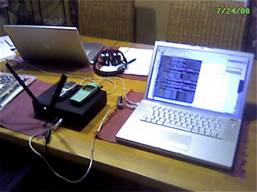
Typical OpenBTS development kit: USRP, laptop and handsets. This particular example has a range of just a few meters, but can connect inbound and outbound PSTN calls through a VoIP gateway.
Hardware and software Requirements:
- An open mind for accepting new concepts.
- Laptop with Ubuntu Ver 11.04 (preferably GNU radio Companion loaded)
- Cellular phone with Headphone
Wireless Communication Research Group @ CEN
Dr.K.P.Soman (Ph.D, IITKgp)
For further details pls visit :http://www.amrita.edu/cen/
Mr.R.Gandhiraj (M.Tech)
Mr.Rakesh Peter (MS by Research)
Ms Soumya V (Mtech)
Mr Senthil
Important Dates/Notes
- Workshop will be conducted on 11th August 2012, 9:00am to 4:00pm
- No of seats limited to 120.
- Registration closes by July 31,2012.
- For registration contact
Mr. Arun Soman,
Dept of Information Technology,
Rajagiri School of Engineering Technology,
Rajagiri Valley,
Kochi 680039.
Contact No: +91 9847931570,
Email: arunsoman@rajagiritech.ac.in. - Registration Fee: Rs. 800/-
- SDR Textbook will be provided during the seminar.
